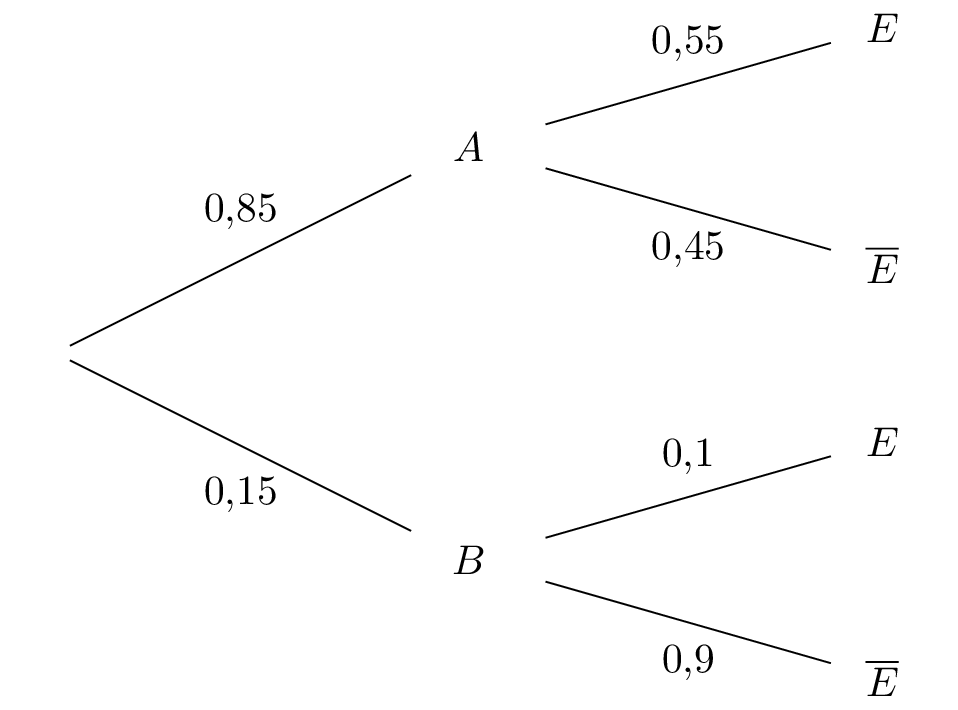Qui aura 20 en maths ?
💯 Le grand concours 100% Terminale revient le 31 janvier 2026 à l'ESIEA Paris !Découvrir →
Nouveau
🔥 Découvre nos fiches d'exercices gratuites avec corrections en vidéo !Accéder aux fiches →
Pour bien appréhender les probabilités conditionnelles - Exercice 3
12 min
25
L'arbre pondéré ci-dessous représente une situation de probabilité.
Question 1

Donner la valeur des probabilités ; et
Correction

Question 2
A l'aide de l'arbre, calculer .
Correction

Question 3
A l'aide de l'arbre, calculer .
Correction

Question 4
En déduire
Correction

D'après la formule des probabilités totales on a :
D'après les questions précédentes, nous savons que : et
Soit :
Ainsi :
Signaler une erreur
Aide-nous à améliorer nos contenus en signalant les erreurs ou problèmes que tu penses avoir trouvés.
Connecte-toi ou crée un compte pour signaler une erreur.